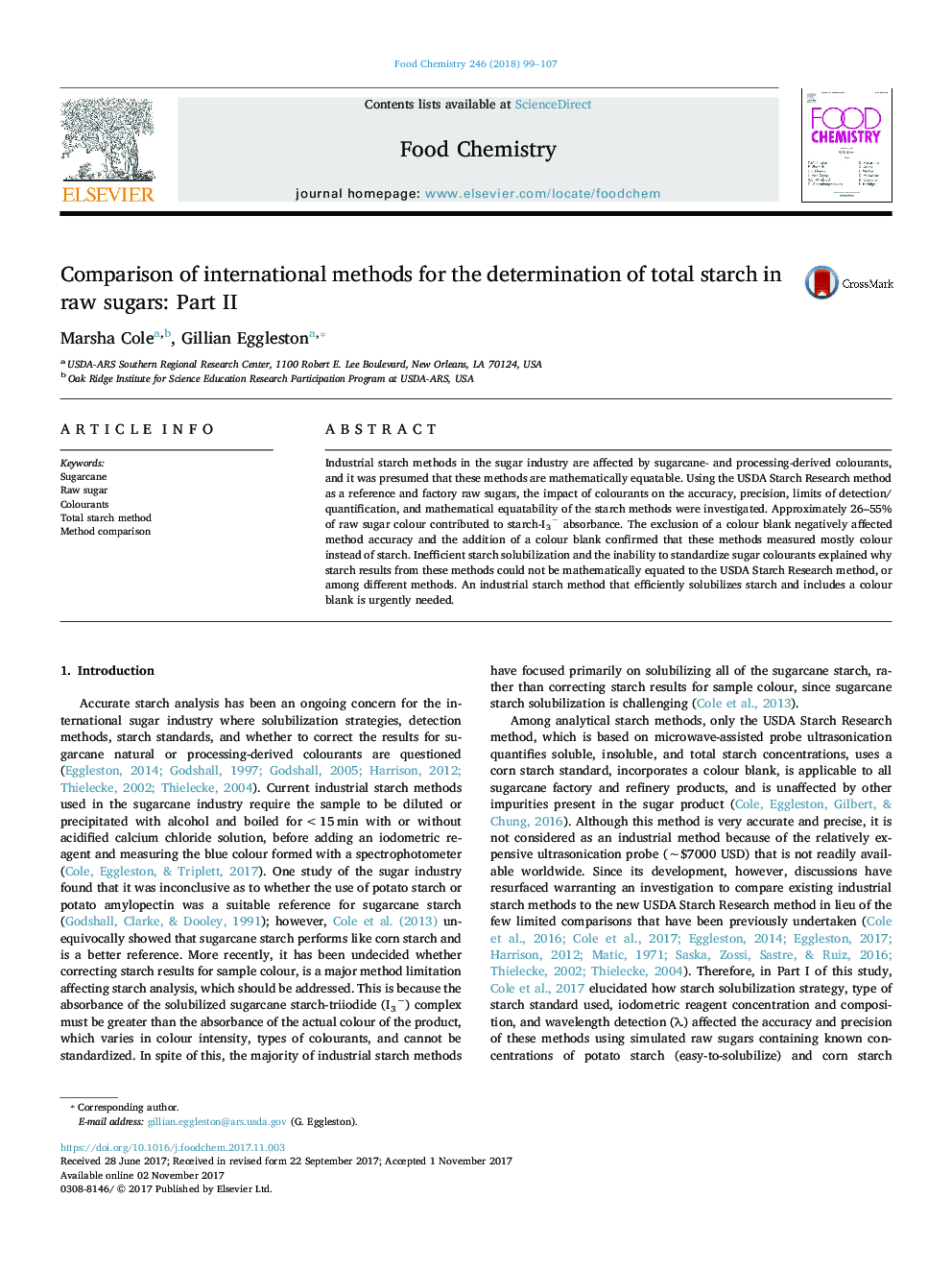| Article ID | Journal | Published Year | Pages | File Type |
|---|---|---|---|---|
| 7586131 | Food Chemistry | 2018 | 9 Pages |
Abstract
Industrial starch methods in the sugar industry are affected by sugarcane- and processing-derived colourants, and it was presumed that these methods are mathematically equatable. Using the USDA Starch Research method as a reference and factory raw sugars, the impact of colourants on the accuracy, precision, limits of detection/quantification, and mathematical equatability of the starch methods were investigated. Approximately 26-55% of raw sugar colour contributed to starch-I3â absorbance. The exclusion of a colour blank negatively affected method accuracy and the addition of a colour blank confirmed that these methods measured mostly colour instead of starch. Inefficient starch solubilization and the inability to standardize sugar colourants explained why starch results from these methods could not be mathematically equated to the USDA Starch Research method, or among different methods. An industrial starch method that efficiently solubilizes starch and includes a colour blank is urgently needed.
Keywords
Related Topics
Physical Sciences and Engineering
Chemistry
Analytical Chemistry
Authors
Marsha Cole, Gillian Eggleston,
